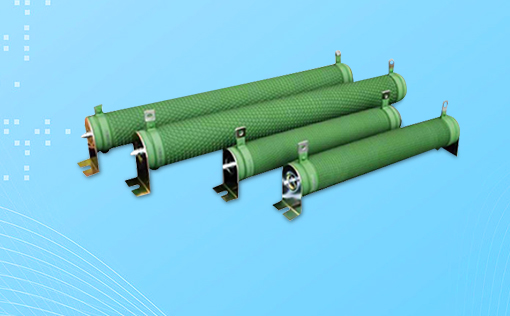How to choose the resistance value of the charging resistor
23-06-06
Small and medium-sized power general inverters are generally voltage type inverters, which use AC-DC and AC-DC working modes. When the frequency converter is first powered on, due to the large capacity of the DC side pump capacitor, the current between the waist and the charging point is equivalent to a short circuit, resulting in a large current. If no charging resistance is added between the rectifier bridge and the electrolytic capacitor, it is equivalent to a direct short circuit to ground of a 380V power supply, and the instantaneous rectifier bridge will explode through an infinite current. After limiting the current of the charging battery, if there are no relays or other components, the power consumption of the charging battery is also high. For example, for a 22KW frequency converter, there is at least 45 current on the PN terminal (value current bus), If there is a problem with the "connection control circuit" part (such as a quality issue with relays or thyristors), the charging resistor will be damaged due to excessive heating after the frequency converter is running for a while. Therefore, the charging resistor is connected in series in the charging circuit, playing a role in limiting current charging at the moment of power on, to protect some input circuit devices such as rectifiers. Some books also refer to it as a slow resistor or starting resistor.

After the charging is completed, the control circuit shortcircuits the power back through the relay's point or transistor, completing the process of powering on the transformer. If the input power supply of the frequency converter is turned on or off, or the melting point of the circuit breaker is in poor contact, or the conduction resistance of the transistor increases, repeated charging or prolonged charging time can cause the charging battery to burn out. Therefore, before replacing the charging resistor, the cause must be identified before the frequency converter can be put into use again.
However, some frequency converters have a voltage detection and peak frequency action on the CPU during startup. If the black lead terminal of the contactor wire is loose, resulting in poor contact, the contactor fails to close, and the large current during startup creates a significant voltage drop on the charging resistor. The sharp drop in the DC voltage of the main circuit is detected by the voltage detection circuit, and the CPU will issue a frequency reduction command. In case of no load or light load, the detection circuit will "report the undervoltage fault in a timely manner", CPU immediately shuts down for protection. The resistance cannot burn out in time, and the frequency converter has stopped for protection.
So, how to choose the resistance value of the charging resistor?
After rectification of 380V AC, the electrolytic capacitor is charged by a charging anode, When charged to a certain value For example, when a DC200V auxiliary power supply is activated to supply power to the control board, the control board works while the relay or thyristor is connected, and the charging resistor no longer works. At the moment of startup, the smaller the charging current, the greater the current flowing through the rectifier bridge. Often, beginners in frequency converter maintenance call to inquire and replace the charging resistor. As soon as the frequency converter is turned on, the rectifier bridge is immediately blown out. Is the charging resistor chosen too small? A The case is negative.
In fact, at the moment of startup, it is generally not because the selected charging resistor R is too small that the rectifier bridge is blown up when the inverter is turned on, but because the battery is too large, which causes the rectifier bridge to blow up. This is because after the inverter is turned on, the current flows through the charging circuit but goes through the charging process, When the charging is sufficient to start the auxiliary power supply (Compared to women like 2000, the CPU works and sends a signal to the relay or thyristor to make it conductive. At point b of the relay's conductive gap, if the voltage is very low/200V, and the point voltage is AC380V, the direct rectification of the point voltage is about DC50V. There is a large difference between the two. During the transmission, the conduction gap current is large, and there is a small resistance between the family and a few hundred volts of voltage added in an instant. This way, the current flowing through the rectifier bridge is much greater than that of the rectifier bridge.) Rated current, so blow up the rectifier bridge.
The higher the power of the frequency converter, the smaller the charging return. Because the higher the power of the frequency converter, the larger the capacity of the electrolytic capacitor required, and the larger the capacity of the capacitor, the longer the charging time required. RC decides on the charging time, and to minimize the charging time, the only way is to set the charging battery positive R to a smaller value. General charging battery cleaning options: The maximum value should not exceed 3000, and the minimum value should be greater than or equal to 1002. For high-power inverters, choose a low charging resistance, while for low-power inverters, choose a high charging resistance.


